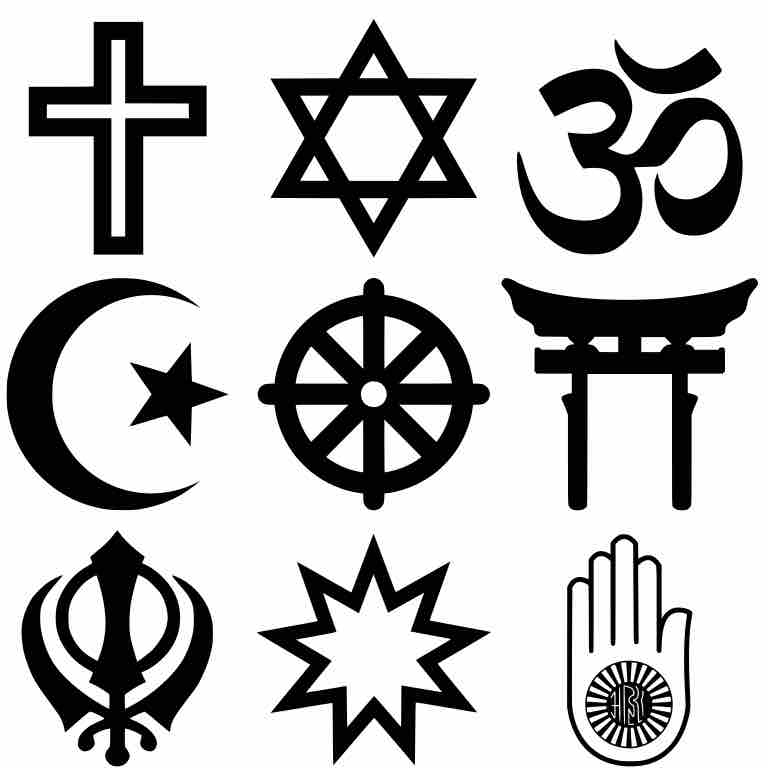Religion
Individuals who practice a religion have belief systems and worldviews that relate humanity to spirituality and moral values. According to some estimates, there are roughly 4,200 religions in the world. The members of your audience could be followers of any of those religions.
Religions may involve the worship of a god or gods or a spiritual force. Many religions have days of observance, narratives, symbols, traditions, and sacred histories that are intended to give meaning to life or a preferred lifestyle from their ideas about the cosmos and human nature .
The five largest religious groups by population, estimated to account for between 5 and 7 billion people, are Christianity, Islam, Buddhism, Hinduism, and Chinese folk religion.

Religious Symbols
Symbols for Major Religions of the World
Five largest religions..........................Adherents in 2000..........................% of world population
Christianity.............................................. 2.0 billion............................................... 33%
Islam....................................................... 1.2 billion.............................................. 19.6%
Hinduism................................................ 811 million............................................. 13.4%
Chinese Folk religion............................. 385 million............................................... 6.4%
Buddhism............................................... 360 million............................................... 5.9%
Additionally, there are may be atheist and agnostics in your audience. The terms "atheist" (lack of belief in any gods) and "agnostic" (belief in the unknowability of the existence of gods), though specifically contrary to theistic (e.g. Christian, Jewish, and Muslim) religious teachings, do not by definition mean the opposite of "religious. " There are religions (including Buddhism and Taoism) that classify some of their followers as agnostic, atheistic, or nontheistic. The true opposite of "religious" is "irreligious. "
Since the First Amendment to the U.S. Constitution guarantees the separation of church and state, the U.S. has no dominant state religion. People with different beliefs are free to practice their religion in the U.S. or to practice no religion.
Tips for the Speaker
Unless you are speaking to a particular religious group, you are likely to encounter audience members from several of the world's religions in your audience. Understanding the religions in your audience will help you relate better to members of the audience and avoid excluding members who may not observe the same practices as you do. It is important to avoid subtle religious discrimination when speaking to a general audience. Often it will be necessary for you to put aside your own belief system to understand the religion of the members of the audience. Of course, you not required to accept or embrace other religions but simply to be aware of and sensitive to them.